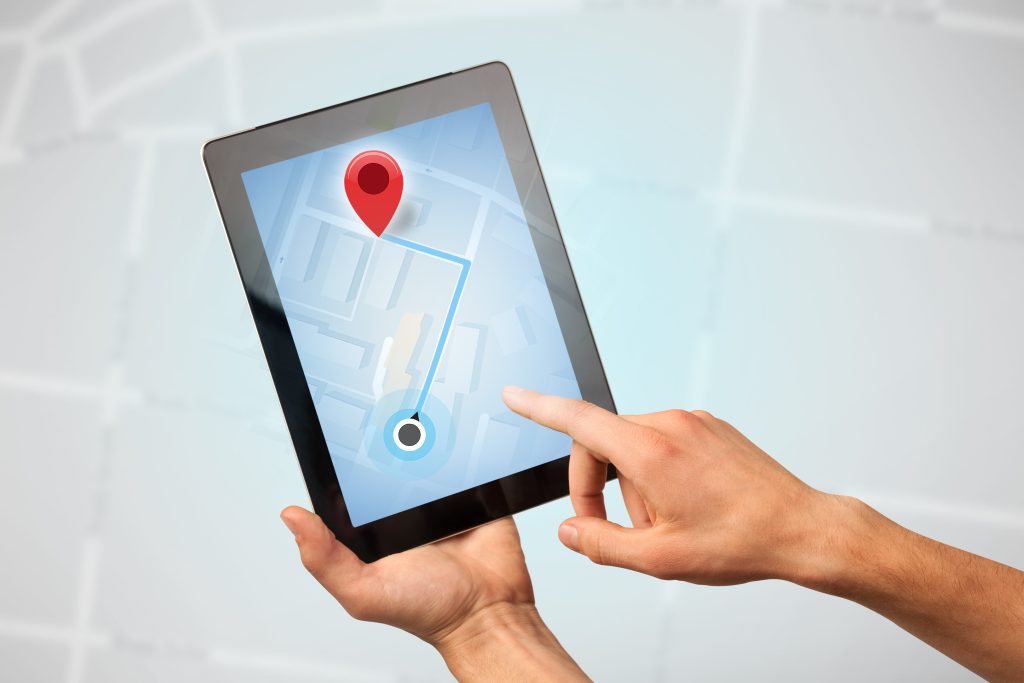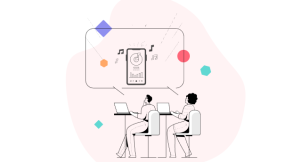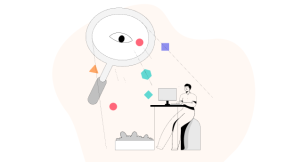When we think about apps that use location data, navigation, taxi apps, or apps with venue reviews come to mind first. Not only does Tinder leverage your location (thanks to the free feature that allowed you to “travel” around the world during the lockdown), but Airbnb, your favorite food delivery service, fitness apps, and even apps that manage your contacts and remind you to call someone when you get home. The market is growing rapidly, with CAGR expected at 24% for 2024-2029.
So location data use cases extend far beyond data usage alone — some apps provide valuable recommendations (events suggestions, for instance), ads (don’t say they are always useless), or articles (Google picks up content based on your travel history).
Since our expertise with location-based apps covers a few industries mentioned above, we’ve gathered the main suggestions for the features, challenges, and price estimations in this guide.
Table of content
What Are Location-Based Apps?5 Types of Location-Based ApplicationsWhat Are the Essential Features of Every Location-Based Application?How to Create a Location-Based App: 6 Crucial Development TipsChallenges of Developing Location-Based AppsHow Much Does It Cost to Create a Location-Based App?Final ThoughtsFAQWhat Are Location-Based Apps?
Location-based apps utilize cellular network data to determine the user’s location with the help of triangulation. The app analyzes and calculates the distance between the user’s device and nearby cell towers. It can approximate the user’s location by locating the signal strength from multiple towers. While not as accurate as GPS, cellular network data can provide reasonably precise location information. Other technologies used include Wi-Fi, Bluetooth, QR codes, etc.

How Location-Based Applications Work
Location-based applications are popular because many users depend on their devices for daily activities. They help push location-specific services and are often integrated into sectors like entertainment, health, and tracking systems.
One of the many ways these apps work is by using GPS satellites. Most devices have GPS receivers for signals sent by those satellites and calculate the time to know your location.
GPS is not the only technology used on these apps. GPS signals might become weak in densely populated areas and bounce off the buildings. This requires connecting to a WiFi point and network. It will allow the app to estimate your present location.
Underlying Technologies
Location-based apps also combine some underlying technologies to improve the way your business interacts with users. Users must grant permission for you to access and collect data. This will enable real-time interactions based on their location.
Cellular Network
Cellular networks enhance the functionality of location-based apps, tracking accuracy in GPS-weak environments.
Cellular networks are wireless communication stations distributed over large areas that make up the cellular network. Each cell connects to one tower, and analyzing the signals from many towers locates the user. Cellular networks include technologies like 2G, 3G, 4G, LTE, and 5G.
Beacon
Beacons aid indoor positioning for an improved location-based experience. It is one of the best technologies for gathering detailed user data. Beacon is also used to integrate personalized messaging to users. This tech gives your business context-awareness based on your user’s behavior.
Beacons can also transmit Bluetooth Low Energy signals, and a device that accepts the signals measure data from various beacons to determine distances. This is similar to AGPS in some ways. Beacons are particularly helpful where GPS signals may be weak.
You can use Beacons for proximity-based marketing. This technology only works on devices with Bluetooth and BLE, not all smartphones.
Geolocation APIs
Geolocation APIs can also locate mobile devices without native geolocation features. They collect data from cell towers and WiFi access points to return coordinates. Use them to customize the user experience based on location with GPS and Bluetooth.
Another reason to integrate this tech is to detect fraudulent transactions. This works by recognizing unusual user behavior (location-wise) and transaction location or payment details. This technology is often used for delivery services and e-commerce stores.
Geofencing
Geofencing relies on geolocation. You can geofence after determining the geolocation of your consumer’s mobile device. This triggers actions when a device enters or exits a certain virtual boundary.
With geofencing, you can grow your business. It is often used in location-based marketing and smart home automation. A common form of geofencing is push notifications that can be used for marketing. You can notify people of specific events, sales, weather alerts, etc. when they enter certain zones.
AI Tools
To improve efficiency, developers can integrate AI-powered location-based results into your app. This will help improve customer satisfaction and engagement. Since AI analyzes patterns, businesses can better understand their user behavior. Logistics companies can use this feature to track shipments and automate tasks.
Frontend & Backend
The frontend of location-based apps involves the user interface, which is crucial for smooth interaction & navigation. Here, your users can see notifications, maps, and other location-based information.
The backend is also an important aspect of your app’s functionality. It consists of servers that developers use to manage communication between APIs, like geolocation, and the app. With a well-developed backend, your product can manage scalability as your customer base increases.
5 Types of Location-Based Applications
The following are some of the common types of location-based applications, each catering to different company goals.
Navigation Apps
Gone are the days of asking strangers or pulling out paper maps to determine your location. Nowadays, smart devices with navigation apps guide you through the fastest or best route to reach your destination. Navigation applications track your geographical area to offer you real-time map assistance to find your route around the world.
With a click on your device, you can find the nearest parks and restaurants, including their ratings. These apps also have voice assistance, guiding you to your location in real time. Some examples of these navigation apps include:
- Google Maps
- Waze
- MapQuest
- Maps.Me
e-Commerce Apps
Most customers love ordering online and picking up in-store to skip delivery waits. This is where location-based e-commerce apps come in. They can suggest the nearest store for the goods or services the user needs based on location.
With geolocation, you can also track your customers’ habits to know their preferred shopping routes and stores. This will, in turn, improve their shopping experience and save you from marketing to the wrong audience.
Delivery Apps
Delivery apps are essential for on-demand logistics and food delivery. They reach customers in real time using cars, bikes, or drones and rely on location data for businesses and customers. For example, Uber Eats uses geolocation to enable users to find nearby food restaurants. Thus, people can order their meals and track them in real time. Postmates offers users nearby grocery stores and shops to order personal items and groceries. It also allows their users to track the movement of their goods.
Safety and Location Tracking Apps
Most mobile devices have a built-in tracking feature. Unlike before, you can now track your lost or stolen gadgets if their GPS is on. Most safety and location apps use geolocation to protect users from data leaks and detect unauthorized activity.
Another reason for their popularity is that parents can track their children’s location. They can set up geofencing with these apps to get notified when their little ones move to the geofenced area. A real-time location-sharing feature allows for viewing location history.
Fitness & Health Apps
With the increased rate of severe health conditions, there is no better time to emphasize the importance of proper healthcare and fitness. One of the ways to do this is with a location-based healthcare application. They use IoT software alongside GPS features to enable users to track their fitness goals and health levels.
These apps help people maintain a healthy lifestyle and find nearby fitness classes or gyms. Some location-based apps like GalaxyFit also integrate with mobile devices, so users can analyze their sleep levels, and monitor walking, running, and cycling stats for more efficient workouts.
What Are the Essential Features of Every Location-Based Application?
To deliver the best user experience, location-based apps have to incorporate certain features:
Interactive Map Integration
Viewing and tracking someone’s precise location on a map in real time is no wonder today. From delivery apps that estimate the arrival time of goods to navigation apps that guide users on how to reach their location, interactive map integration is a crucial aspect of location-based apps. This feature allows users to view other information as well — travel history, address, speed of delivery, etc.
GPS Tracking
GPS tracking functionality is a crucial component of location-based apps. Along with other technologies described earlier, GPS helps estimate the user’s precise location and push location-based services. Most developers use geolocation app builders to integrate GPS into their products.
Offline Functionality
Offline functionality is often necessary for situations where the users have no access to the internet or poor internet connection.
Location-Based Filter
Location-based filters help curate personalized search results based on users’ current location. Apps with this functionality can offer recommendations and information directly relevant to one’s geographical area. For example, if you travel to a new city and want to find a restaurant from the same chain, the app’s built-in filter will display only restaurants within walking distance.
Voice Control
Voice control plays a role in applications targeting users who are on the move. It offers the convenience of hands-free operation, enabling people to interact with the application using voice commands. This functionality is important from a safety standpoint as it allows individuals to use location-based apps while driving or engaging in tasks that demand their full attention.
Voice navigation is indispensable for drivers. By integrating route options, traffic alerts, and notifications into the voice navigation functionality, drivers can make informed decisions on the go, choose the most suitable route, and stay updated with real-time traffic conditions.
Notifications
Notifications improve user interaction with the app. They simplify receiving data about upcoming events within one’s community or enticing offers of the day. Notifications also eliminate the need for doomscrolling because of targeted, personalized messaging (for example, arrival estimate time).
Suggestions
Location-based apps can provide suggestions, including nearby attractions, restaurants, events, or activities that align with the user’s interests. They suggest a rest stop based on how much driving you have left to do and the time of day. Users can get suggestions for a better route based on location and route impediments, like traffic jams, nearby.
Data Analytics
Data analytics allows for the collection and analysis of data from a geographical zone for data cross-referencing. This gives insights into user behavior, app performance, and location trends. Businesses can use this feature to optimize their services and make data-informed decisions.
Get a development price for your GPS navigation app
Contact usHow to Create a Location-Based App: 6 Crucial Development Tips
Apart from integrating maps and basic location services, consider other aspects of developing a location-based app, including research, design, feature prioritization, etc.
1. Conduct Market Research
Market research is a clear first step in the app development process. The following are some of the things to account for:
- do a competitor analysis by reading the reviews of similar apps.
- Know your target audience, speak to them to know their expectations.
- Consider the existing market leaders in the niche to understand the industry trends.
- Look out for data privacy laws that are specific to your target industry.

2. Create a Monetization Strategy
You need to devise a precise monetization strategy for your app, so it will generate enough revenue. As soon as you research and identify your target audience, you should move to a monetization model, pricing, trial periods, payment systems, compliance with app stores guidelines and data storage/collection regulations. The following are some types of monetization models:
- Freemium model is one of the most common monetization models. It uses a strategy that combines aspects of app subscription and paid apps with strategies like in-app advertising. In this model, some app features are free, but if you want cooler features or an ad-free experience, you have to pay extra.
- Subscription model generates income through recurring fees. Here, users pay a fee either monthly or every year to access the full features and services of the app. Although users can download it for free, they need to pay to stop seeing app ads.
- In-app advertising is another effective and fast way of monetizing your mobile app. When we talk about in-app adverts, we refer to banner ads, video ads, gamified ads, and native ads. They appear at the bottom of the screen or blend in with the app’s content. The app creators make money when users click these ads, making it possible for them to make the app free.
- Pay-per-use gives users flexibility without the need for long-term commitments. This model is best for apps offering premium or occasional services. It allows users to access high-value features without a subscription, making it user-centric and cost-effective.
- Affiliate marketing is a strategic way to earn from your app by forming affiliate partnerships. Since users can use your product for location-based search engines, you can integrate affiliate links. With these links, users can make purchases and sign up for a third-party service to generate commissions. This strategy is common in niche apps where the partner products align with the app’s user interest.
- Transaction fees apply to apps related to the online marketplace. Here, users can buy and sell on your mobile app while you take a percentage of each transaction. An example of this is an investment or cryptocurrency app that charges a fee every time a user sells or makes a purchase.
3. Select Your Trusted Dev Partner
Before choosing a development partner for your app, define your priorities. Know what matters most to you when working with a development partner. If you have experience working with developers, you can create a checklist that works for you. It should include considerations like checking client feedback, reviewing their portfolio, and assessing their technical skills.
Always base these lists on their experience building location-based apps. For example, Weelorum has a proven track record in developing apps like Vortex, which has real-time tracking features. Our portfolio has location-based apps from several industries, such as e-commerce and apps for travelers.
Partnering with Weelorum gives you insights into how we’ve tackled project challenges, ensuring a smooth development process.
4. Plan Your UI/UX Design Concepts
Planning your UI/UX design is the fourth step when creating your location-based app. It plays an essential role in maintaining user engagement and retention. Therefore, incorporate current design trends that will capture your users’ attention: voice user interfaces, micro-interactions, and gesture-based navigation.
The aim is to create an intuitive design that improves user satisfaction. Ensure that your app button’s colors contrast with the background and have easy-to-read fonts. Working on user personas and user journeys greatly increases the chances of building a functional product.
5. Add Handy Features
Location-based apps should have practical features to enhance usability. Consider the following additions to ensure your users get a product that meets industry standards:
- Augmented Reality. This handy feature helps to give users an immersive experience.
- Push Notifications. With this feature, you can send location-specific alerts to users.
- Offline Mode. It will make it easier for users without the internet to use the app’s core functionalities.
- Social Sharing. Friends and families can exchange their location in real time. Posting locations on popular social networks can boost engagement and encourage people to communicate.
6. Leverage Gamification
Gamification is an effective way to increase user engagement and retention in your location-based app. Add gamification functionalities that make the product more enjoyable, so people are likely to get back to it (retention is one of the key metrics app owners should monitor).
For example, implement a points and achievements system to reward users for completing specific tasks or reaching milestones. Integration of a leaderboard functionality can foster healthy competition among users, motivating them to participate actively in the app’s activities.
Looking for a reliable development agency
to develop a GPS app?
Request a free quote from us
Contact us
Challenges of Developing Location-Based Apps
Creating location-based apps presents some challenges related to the privacy implications of collecting a user’s location data. To avoid alienating your audience, developers should consider:
Compliance with Data Privacy & Security Regulations
Compliance with data privacy and security regulations is one of the significant challenges of location-based apps. This raises concerns about the possibility of data breaches. For example, a location tracker app (Life360) suffered a data breach that affected 443,000 users in 2024.
Also, in 2015, a cyberattack on mSpy led to the loss of millions of data. Location apps must follow regulations like GDPR and CCPA to reduce data breach risks. They ensure strict data handling and breach notification protocols to protect user privacy.
Maintaining Location Precision in Various Areas
Location precision challenges are a common issue in the development of location-based apps. With GPS, it’s possible to pinpoint your location within a few feet, but if you’re indoors or inside a building, this becomes much more difficult. Wi-Fi and cellular networks are great solutions only when there is a connection to a network.
Developing location-based apps requires engineers to account for these situations in their code and come up with solutions so that users don’t have accidental coordinates sent using their apps.
To tackle this challenge, developers can combine many technologies, such as GPS, WiFi, and Bluetooth, to improve accuracy. Implementing advanced algorithms like geofencing enables precise location tracking within specific areas.
Privacy and Ethics
Ethical considerations involve ensuring that the app’s features and functionalities are designed to benefit users without compromising their well-being or infringing upon their rights. iOS is a closed-source operating system and with a much more stringent application approval process than Android.
To stay within legal limits, location-based apps have to:
- Avoid invasive or unethical use of location data, such as tracking individuals without consent or selling user data to third parties without explicit permission.
- Implement anonymization techniques to protect user identities when handling location data.
- Consider incorporating privacy-enhancing technologies, such as differential privacy, to balance delivering personalized experiences while preserving user privacy.
- Regularly review and update privacy practices to align with evolving privacy regulations and user expectations.
How Much Does It Cost to Create a Location-Based App?
The cost of creating a location-based app depends on the details of your project:
- The expertise of the developer team.
- The number of developers.
- The complexity of the project, including the number of features to be integrated.
- The type of the app (native, web, cross-platform).
- The urgency of your project.
- How extensive QA testing is.
- The cost of licenses for Application Programming Interface (API) to be integrated.
The factors above basically come down to how much time your project will take and how much you will pay for every hour spent. A rough estimate is about 2,000 hours of work to bring your project to the production stage, which is $60,000 to $80,000.
Let’s create your own dating app!
Contact usFinal Thoughts
Location-based apps have revolutionized how businesses engage with users. Features like real-time tracking and mapping routes help improve user engagement. Despite challenges, these applications remain an effective tool for modern brands.
By doing your research and following the steps in this article, you can build an app that users will enjoy. With the right strategies, your product can stand out in the competitive market.
FAQ
Is it hard to develop a location-based app?
Developing a functional location-based app may be difficult for a developer since there are more factors to consider than coding and designing. But if you have a team of professionals with location-based app development experience, they will know how to strategize the process effectively.
How do I protect user data in location-based apps?
You can protect user data in location-based apps with data encryption before sending it over the network to prevent unauthorized access.
Is there any ongoing maintenance for a location-based app?
Yes, ongoing maintenance is desired, including regular updates for bug fixes and security patches.
How can I ensure that my app stands out in a competitive market?
Successful location-based apps take a lot of hard work to develop and mostly — synergy between the customer, development team, and, ideally, marketing team. Planning, conducting research, and implementing features are only the tip of the iceberg. So make sure you think about the marketing budget, do proper market research, and involve the development team in the product creation process, so they feel more involved and help you with your choices along the way.
Aren't there new, more accurate location data-gathering options?
There are new methods of extracting location data like 5G technology, Indoor Positioning Systems (IPS), and ML algorithms. However, they are based on existing technologies like GPS, cellular networks, Wi-Fi, and Bluetooth.


